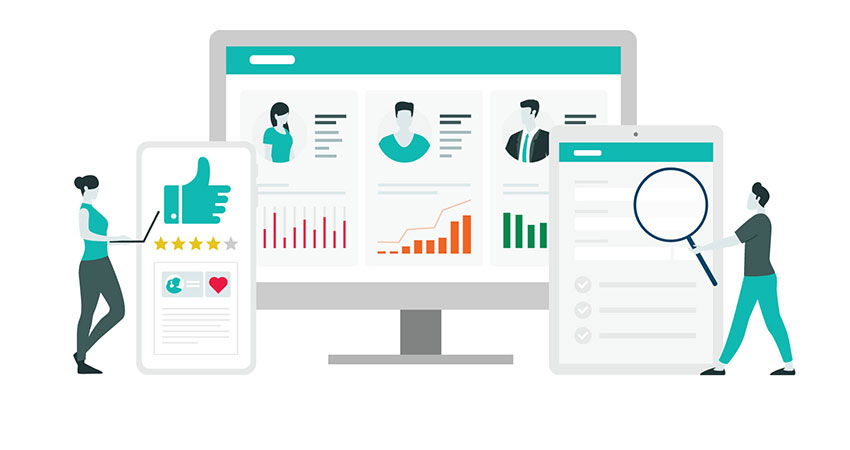For businesses, first-party Data is a significant resource. It is the knowledge that businesses have about their clients, which can range from contact information and past purchases to demographic characteristics and preferences.
Because first-party Data, in particular, firms can use it to target marketing efforts more precisely and give customers more individualized experiences.
This article will give you a more thorough introduction to First-Party data and demonstrate how you may create a custom plan to benefit from it.
Overview of First-Party Data in Detail
First-party data, as previously established, refers to companies’ knowledge of their clients. Numerous methods, such as online forms, surveys, customer service encounters, and transaction data, can be used to gather this information. Additionally, it can be retrieved via online activities and social media profiles.
First-party Data is specific to each company and can give companies a competitive edge by allowing for the development of more individualized consumer experiences.
First-party data can also be used to categorize customers to target marketing campaigns more precisely.
How to Compile Data
There are other ways to get data, but the most crucial thing is to ensure the consumer has permitted you before gathering any data. The best way to obtain consent is to be open and honest about the purposes behind your data collection and your intended use it.
To provide customers the option to provide their information, you can utilize “opt-in” forms on your website or in your emails. Customers can always be asked for their information when they make a purchase or contact customer care.
A First-Party Data Strategy Building
You are now prepared to begin developing your approach because you know what first-party Data is and how to collect it. Here are some pointers to get you going:
1. Set Specific Goals
Identifying your objectives for collecting first-party Data is the first step. What do you hope to accomplish? Would you like to offer more tailored consumer experiences? Do you desire more effective marketing campaign targeting? Once you know your objectives, you can begin to create a strategy for gathering and utilizing data.
The “4Ps of marketing” is an easy method to decide what the goal of the Data you’re collecting is:
- Product: What services or goods do you provide?
- Promotion: How are your products or services being promoted?
- Costs: What are the costs of your goods and services?
- Place: In which locations are your goods or services offered?
The answers to these queries can help you visualize where you want to take your business in the future.
2. Gather the Correct Data
Data are not all made equal. To reach your objectives, you must gather the appropriate data. For instance, your data stack must have customer preferences and routine details if you want to generate more customized client experiences.
On the other hand, you’ll need information on customer demographics and buy history if you want to target your marketing campaigns more precisely.
The secret is gathering as much information as possible, then utilizing it to develop profiles of your potential clients. You can use these profiles to identify the most crucial information to attaining your objectives.
This procedure step may seem a little intimidating if you’ve never done it before. This is why it’s crucial to work with a data-driven marketing company that can assist you in gathering and analyzing your data. For instance, a reputable IT services provider can assist you and will likely have a strategy for the marketing campaign you should run.
This is a terrific alternative for new business owners since it limits the potential for error, produces the desired outcomes, and allows you to learn about the procedure.
3. Create Personalized Experiences with the First Party Data
When you have the correct information, you can leverage it to give your clients more individualized experiences. This can entail showing them relevant adverts or sending them tailored emails with relevant offers.
You can segment your customer base using first-party data to give your consumers more individualized service. Create a VIP group for your top clients, for instance, and grant them special access to any new goods or services.
4. Examine and Validate the Outcomes
To determine whether your first-party data approach is practical, evaluating the outcomes is crucial. Are your objectives being met? Do your conversion rates go up? Are you seeing an increase in client satisfaction?
Do not be hesitant to experiment and try different things if you are not getting the desired results. The most crucial thing is to continue developing your first-party data strategy and making progress.
Filling the Gaps in Your Plan
Don’t worry if you’re still figuring out your first-party data strategy; you’re not the only one. Many businesses are still attempting to determine how to use this data most effectively.
Utilizing second- and third-party Data is one technique to close gaps in your action plan. This information can support your first-party data and assist you in achieving your objectives.
For instance, you can use second-party data to locate specific clients if you want to target them with your marketing campaigns. Then, you can use data from a third party to learn more about their preferences and interests.
Although this information may be very beneficial, it’s vital to keep in mind that it should be utilized to enhance, not replace, your first-party data. Nobody knows your clients better than you do, after all.
No matter what stage your first-party data strategy is in, keep in mind that it’s a journey rather than a final destination. As long as you keep working toward your objectives, you’ll eventually succeed since there’s always space for growth.
What Are The Advantages of First Party Data?
Utilizing first-party data to give your consumers a customized experience has numerous advantages. Some of the most significant ones are listed below:
- You’ll be able to gather more accurate data: When you gather it on your own, you can be sure it is accurate. This is because you have complete control over the procedure and can ensure that all Data is appropriately captured.
- With first-party data, you’ll be able to pinpoint your target demographic more accurately for your marketing initiatives. As a result, you can develop marketing initiatives tailored to them, producing more significant outcomes.
- You’ll be able to provide better customer service because grouping your clients will allow you to provide them with more individualized attention. Customers will be happier, and customer satisfaction numbers will rise.
- You’ll be able to boost your sales and conversions: By using first-party data to make more individualized experiences for your clients, you can persuade them to spend more money with you. Sales will rise, and conversion rates will rise as a result.
- Using first-party data, you can demonstrate to your customers that you value their business and are working to provide them with the most incredible experience possible. This will contribute to developing the crucial customer trust that any firm needs.
Are There Any Disadvantages?
First-party data usage has a few possible downsides, but they can all be avoided with careful preparation and implementation. Some of the most crucial considerations are listed below:
- You need to have a plan. Although first-party data can be pretty compelling, it won’t help you if you don’t have a strategy for using it. Please ensure you are clear on your objectives and how you plan to attain them before you begin data collection.
- You must take privacy seriously when gathering data. It would help if you took privacy protection of your customers’ personal information seriously. Ensure that you are just gathering the data you require and that your privacy policy is explicit.
- You must ensure you have the appropriate tools for the job because gathering and interpreting first-party data can be challenging. There are numerous software applications and services that can assist you with this.
- You must be flexible because first-party Data is continuously changing. Therefore you must be ready to adapt as well. You’ll be able to get the most out of your Data if you are adaptable and eager to try new things.
Conclusion
Any organization can benefit from first-party data, but it’s crucial to remember that it’s only one component of the puzzle. To have a complete picture of your customers, you must combine it with data from various sources.
Now is the moment to start leveraging first-party data, if you aren’t already. You will get a competitive edge and be able to provide better consumer experiences if you collect and analyze your data.


